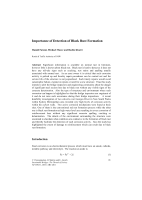Bridges

- Publication no: ABC-WPD008-11
- Published: 31 October 2011
- PDF (free) Download
Significant information is available on normal rust in literature, however little is known about black rust. Black rust is hard to detect as it does not have any tell-tale signs such as cracking, rust stains and spalling usually associated with normal rust. As an asset owner it is critical that such corrosion activity is picked up and thereby repair procedures can be carried out and the service life of the structure is not jeopardized. Such timely repairs would avoid catastrophic failure, expensive repairs or need for a new structure. Thus this study intends to alert the bridge inspectors and engineering community about the danger of significant steel section loss due to black rust without any visible signs of the concrete deterioration. Also the type of structures and environment where such corrosion can happen is highlighted so that the bridge inspectors are cognizant of it and do not miss such occurrence during their bridge inspections.
A recent durability investigation of two culverts over Georges River in New South Wales within Sydney Metropolitan area revealed very high levels of corrosion activity within the culvert walls. Two active corrosion mechanisms were found at these sites. One of them is the conventional red rust formation process while the other one is black rust formation at high water level area resulting in severe corrosion of reinforcement bars without any significant concrete spalling, cracking or delamination. The details of the environment surrounding the structure were examined to elucidate what conditions are conducive to the formation of black rust and thereby facilitate the detection of such corrosion activity.
Also the study has highlighted the extent of damage to reinforcement which can result due to black rust formation.
